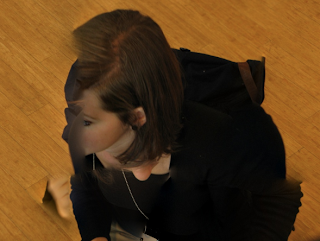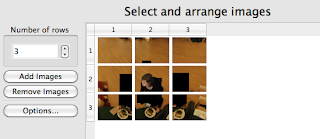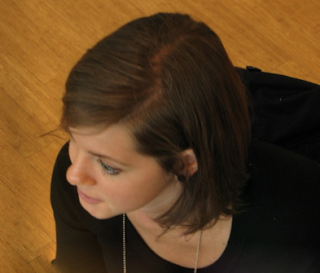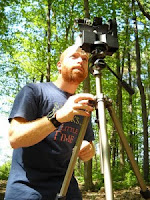For the past six years, CREATE Lab GigaPan outreach has inspired projects in 20 countries, engaging 1,176 educators, 6,371 students, and 153 leading scientists across the globe.
Today we are proud to announce the release of a GigaPan curriculum collection including 20 lesson plans, based on projects that were developed and implemented by 41 of our partner educators, featuring a variety of content areas and unique approaches to GigaPan. We're proud to show off their work.
The curriculum collection is available on: gigapan.com/cms/use-learn.
Each unit details the related common core and state standards.
In addition to our gratitude toward our partner educators, we dedicate a very special thank you to Jennifer Geist of Zeitgeist Creations Global Education Tools, who curated all the unit plans and uniformly formatted them for easy reference and implementation. To complete the collection, Jennifer bundled these units with educator guides for online resources, hardware, activity ideas as well as a project design template.
Photography becomes transformative when the image maker is empowered to capture what is most valuable to them, and even more so when they share this perspective with others. By creating and sharing GigaPan images, educators, students, and scientists can share the stories of their own landscapes and ignite conversations with participating groups all over the world.
We asked some of the educators featured in this collection to share their perspective about GigaPan.
Here's what they said:
Elizabeth Lallathin, Kellogg Elementary School, Huntington WV, USA
"Using GigaPan in my classroom has allowed all readers access to inferencing skills and to be part of a greater conversation. Images found on gigapan.com have become a virtual window to the settings of books, lessons, and news. Readers are able to place themselves inside of the picture and see it close up. The images grab the audience and hold the attention begging the onlooker to inquire more deeply with every zoom...GigaPan is a tool that I highly respect and enjoy using within my classroom."
Download Elizabeth's projects: World of Diversity and Travels Through Literature
Hari Prasetyo, SMA Al-Izhar, Jakarta, Indonesia
"GigaPan is an amazing tool. Using GigaPan has taught me and my students many things, such as, partnership, exchanging the ideas, and because we are from Indonesia we practice our English conversation by communicating with our partner school. The gigantic panorama produced by the GigaPan enables us to find/zoom in on unique or strange pictures/phenomenon/scene in our daily activities or cultures. We then can discuss these findings within our class or ask for an explanation from our school partner's students and teacher. So much cultural diversity or biodiversity that we can understand and learn about."
Download Hari's project, School Daily Activities,
here.
David Williams, Huntington High School, Huntington WV, USA
"What I liked about the GigaPan is that it allowed the students to make discoveries without me telling them and it allowed me to see what interested them. It allowed their peers to help them because they were the only ones online to communicate with. It made the students excited and engaged. I had fully engaged students and by being on the computers students that might not participate in discussions could discuss via the keyboard. This project did a good job hooking my students on learning about the Incas."
Download David's project, Inca & Ancient Civilizations, here
Linda Twedt, South Fayette Middle School, McDonald PA, USA
"The magic of GigaPan is as much in what it can show as in what it can 'erase'. With assistance, we were able to peek inside the contents of a frozen food truck seemingly without the doors. GigaPan excites the students with its Facebook-style interface, allowing them to use their foreign language skills to get to know their partners, who may live many thousands of miles away."
Download Linda's project, Alimentation/Nutrition, here
Briana, student of Brandon Keat, Propel School, Pittsburgh PA, USA
“I must admit Gigapanning for me became a new craving! All I thought about when I walked around was 'this would be a great place to do a GigaPan.' I learned it all – how to set the machine up and how to adjust everything correctly and take awesome pictures. It was an amazing experience and I'm glad I got to be apart of it!"
Download Briana's classroom's social studies project here
Khosi Ntuli, Tlhatlogang Junior Secondary School, Soweto, South Africa
"I am an educator teaching Life Orientation at Tlhatlogang Junior Secondary in South Africa. Students are faced with challenging dilemmas. Life is all about choices and priorities. My subject aims at equipping them with skills and techniques to face their challenging background. Meeting with other educators made me realize that one way or the other we are all the same. We are faced with the challenge of changing the minds of those kids that God has placed to our care.”
Download Khosi's project, Global Health, here
Becky Severino, Beverly Elementary School, Beverly WV, USA
"The Self-Portrait GigaPan project sprang from a discussion with a preschool teacher about found objects. We decided that we would ask our students to go on a treasure hunt at home and bring to school any small treasures they could find. We used the objects as springboards for creative play. When it seemed that the students had exhausted all possibilities, we introduced the concept of self-portraits. Using the GigaPan site, we visited museums and art galleries to see original self-portraits by famous artists. We used our found treasures to build faces, working without glue so that we could change our work, revisit it, recreate the faces depending on the objects chosen. Finally we created our own self-portraits. We then created puppets from our objects and wrote stories about their lives.
We were so fascinated with that GigaPan that we decided to create our own using the self-portraits of famous artists. We made small thumbnail copies of their works and placed them in various spots around our classroom. We then made larger versions of the same pictures and used those to cover our faces and placed ourselves in the GigaPan. We were very pleased with the outcome of our work!"
Download Becky's project, Beautiful Stuff: Self Portraits,
here
Bonnie Conner, Milton Middle School, Milton WV, USA
"I created the project for a classification unit I do near the end of the year. My students are always amazed at how the GigaPan works. Students enjoy trying to find the organisms and classify them. I even taught a student teacher how to use the GigaPan last year and used it in my digital imaging club with 6, 7, and 8th graders."
Download Bonnie's project, Nine Phyla of the Animal Kingdom, here
Marti Louw, University of Pittsburgh, Pittsburgh PA, USA
"Gigapixel technology brings a 21st century spin to the natural history diorama. Explorable images not only make accessible the remote, rare and hard to see, the technology enables learners to explore, observe and discover meaning in their own way."
Download Marti's project, Stories in Rock, here
Jason Jackson, Beverly Hills Middle School, Huntington WV, USA
"The projects main focus was to broaden the horizons of children. Many places around the world seem so similar to us here in the US, but the differences in everyday activities, like grocery shopping, can be surprising. During this project we took time to look at local prices for a gallon of milk and compare that mathematically to the price of a gallon of milk in other locations. We started our investigation by asking family and friends who lived in other states what a gallon of milk cost. Then, we explored the GigaPan site and other internet sites for the price of milk per gallon. After locating several outlets, a convenient store in the middle east, a European Sweet Shop, an Asian open market, and grocery stores in the United States, the data comparison assignment started. As a culminating assignment, students had to use the information that we had learned to create a visual representation of how the prices varied among other objects located in our class' original GigaPan. Most students chose a spread sheet which related back to our math basis."
Download Jason's project, Nutrition & Markets,
here.
View the full curriculum collection here
]]>































